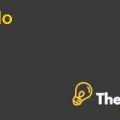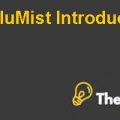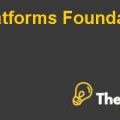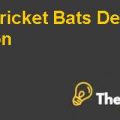
Presentation of facts about the case
Nor’easters is a new Class A minor league baseball team. The marketing director of Nor’easters, Buckingham, wants to sell the tickets for the team’s first season which is going to begin in June 2009, a year and a half from now. Therefore, he has to decide a price for tickets till June 2008 when they are scheduled to be sold. However, the falcons, the only professional football team in Springfield has withdrawn, which is news of caution for Buckingham.
Springfield was once a manufacturing center in 1950s, however it had lost many wealthy individuals since then resulting in drop of 3.6% decline in income. In 2006, the US government came up with demo graphical statistics. It informed that the median income for family of three was $37,800,the median household income was $31,046. 25% of families lived below the poverty line. Majority of the proportion comprised of younger children lower than 18 years of age (60%), 10% were senior citizens living alone or couples, and 25% were single men or women under age 65 living alone. However, it has abundant supply of labor and low cost housing encouraging businessman to settle their business there such as health care and financial services.
In 2008, it had 176 minor leagues baseball teams which compete through 19 regional leagues. These leagues were very popular allowing people to get close to their favorite players. There were 30 major league team who sent their younger individuals to minor league teams to develop their skills. Some of the expenses such as player’s salaries, bat and ball expenses were met by them. However, other expenses such as uniform expenses, league dues,staff salaries, travel expenses and stadium leases were paid by minor league team.
The team is expected to play 76 games in its next season. As far as the expenses of stadium lease was concerned, the Springfield College gave its stadium in return of 100% of parking revenue that is $4 per car. Moreover, the City Of Springfield and three other colleges agreed to provide financial support of $21,000 and local restaurants and hotels agreed to provide $25,000 in sponsorship and advertising.
Buckingham, who wants to sell as many base ball tickets as he can, he did not have much data about the local market. The only data he had showed that only 8% of people surveyed attended a professional baseball game. Moreover, 23% of people had watched one or more games on television. Even, college students did not attend baseball games due to high cost of ticket and unavailability of transport.Finally,Buckingham also began a survey to find the requirements of his potential audience to come to watch baseball games and set appropriate price for them.
Identification of Key Issues
Buckingham wants to sell as many tickets as possible to generate sales that would atleast meet total costs. However, there are many issues which have restricted him to charge maximum possible prices. Moreover, he wants people to show interest in the game and watch it in the stadium instead of their television sets. It would also increase concessionary sales for the club.
In Springfield, 25% of population lives below poverty line.In spite of being the birthplace of Basketball, the city has fewer opportunities for sports fans. Moreover, Falcon, the only professional ice hockey team is leaving the club because they are unable to meet their expenses. The charm of sports exist in other areas such as the Boston area, where people go to watch games as the Springfield lacks infrastructure required.
Buckingham also does not have the in-depth market research data for a robust decision. The only data was sourced from the League Sports Association in 2005 which was out of date as well as lacked in depth research. College were not able to attend any basketball and football matches due to the high cost of tickets and lack of transportation.
Buckingham also did not have any experience of marketing and maximizing the earnings from concession sales. The questionnaires which were mailed to potential customers also had a lower response rate of 39% with people having diverse views for the prices that could be charged for tickets and the concession sales products.
SWOT Analysis
The SWOT analyses the Strengths, Weaknesses, Opportunities and the threats of a business to come up with opportunities that could help it revive its position in the market..........................
This is just a sample partial case solution. Please place the order on the website to order your own originally done case solution.












